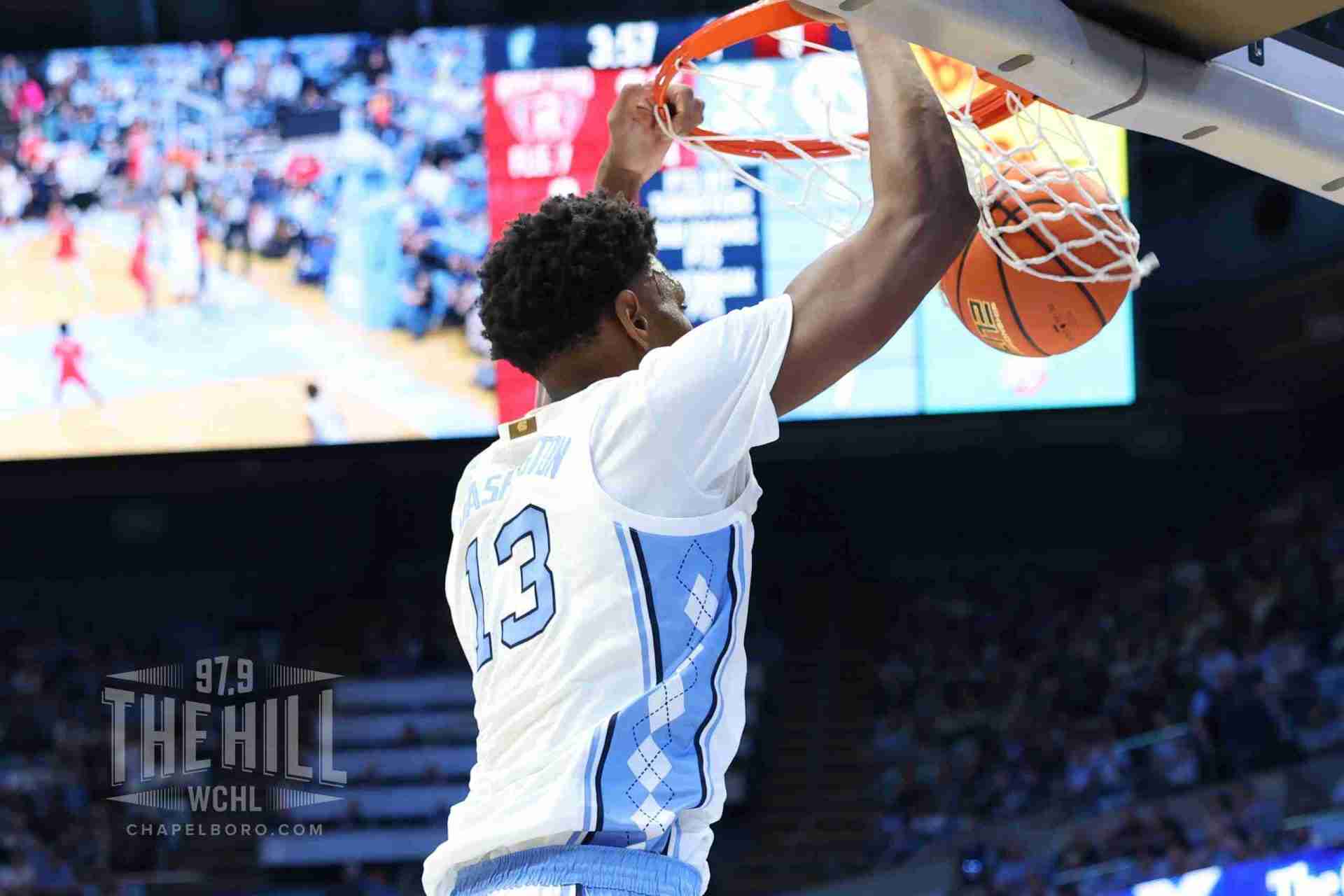As UNC Signs Two Top-10 Prospects, NCAA Title History Worth Remembering
By David Glenn
Critics of recruitment policy and its supporters have valid arguments.
For example, as every fan knows, many prep All-Americans turn out to be failures at the college level, and many three- and even two-star prospects become great college players, often in football and sometimes in baseball. basketball.
At the same time, it’s true that 22 (and it’s not over) back-to-back national champions in major college football had at least one top-10 recruiting class on their roster when they won it all, and 21 of them had multiple top-10 classes within reach when they hoisted the trophy.
Likewise, in men’s basketball, North Carolina’s incredible history as a six-time NCAA champion highlights the importance of recruiting truly elite high school prospects.
Why is this topic important right now?
Well, the inaugural NCAA national signing period for men’s basketball (November 8-15 this year) ends today, and for only the second time in the last decade, the Tar Heels have signed a group considered among the best in the country: New York. City wing guard Ian Jackson, North Carolina wing forward Drake Powell and Illinois center James Brown.
According to the 247 Sports Composite, which aggregates player rankings from several recruiting centers, Jackson and Powell are among the consensus top 10 players in the Class of 2024 (current high school players), and Brown is among the consensus top 75 prospects.
Here are some comments from UNC coach Hubert Davis on his latest signees.
On brown: “Being from Chicago, he knows how to compete and work hard every day to try to become the best he can be on the field, off the field and in the classroom. As a big, he can finish at the basket with either hand, he can shoot threes, he’s an elite rebounder and shot blocker, and he’s a versatile defender. He is exactly what we wanted and needed in this class.
On Jackson: “Ian is exactly why I love New York guards. He’s tough, competitive and he plays with a chip on his shoulder. Ian can also score directly – with the ball, off the ball, in transition. He can get buckets but also likes to pass and is a great defensive player. I have never seen a kid as competitive as Ian, so humble and kind off the field. He has a smile and personality that will light up the Smith Center.
On Powell: “Drake is a rare combination of humility, competitiveness and teamwork. He has a team first mentality and wants to learn and improve every day. He also has elite length and athleticism on the wing, and he can dominate on both ends of the court. Drake can score and defend at the highest level. He committed to Carolina early and is exactly what we are looking for: a great person and talented athlete from an amazing family.
Although recruiting rankings weren’t really a thing in 1957, when the Tar Heels won their first NCAA championship, they have been a growing part of college sports coverage since the 1970s and are ubiquitous in the era of the Internet.
A quick look at the makeup of UNC’s five most recent national championship teams – two (1982, 1993) under the late/legendary coach Dean Smith, and three (2005, 2009, 2017) under the leadership of recently retired Hall of Fame coach Roy Williams. – reiterates the extreme importance of signing top 10 prospects, like Jackson and Powell, in particular.
Despite the many recognized imperfections in recruiting rankings, over the past 50 years, more than 90 percent of the consensus top 10 high school players have gone on to play in the National Basketball Association, and a large majority of them have made great things at the ranking level. college level too. These are fascinating correlations worth remembering on National Signing Day.
Meanwhile, all five of the Tar Heels’ NCAA title teams over the past half-century featured at least one former top-10 high school prospect, as well as several other top-25 signees, playing an integral role during their respective successes of March Madness.
2017: One starter (junior forward Justin Jackson) from the national championship game was a consensus top-10 recruit. Three additional starters (senior forward Isaiah Hicks, junior point guard Joel Berry, junior forward Theo Pinson) and one key reserve (freshman center Tony Bradley) were consensus top-25 recruits.
2009: Three starters (senior center Tyler Hansbrough, junior guard Wayne Ellington, junior point guard Ty Lawson) and one reserve (freshman forward Ed Davis) from the national championship game were consensus top-10 recruits. Another starter, senior guard Danny Green, and a reserve, freshman center Tyler Zeller, were consensus top-25 recruits.
2005: Three starters (junior point guard Raymond Felton, junior guard Rashad McCants, junior center Sean May) and one reserve (freshman forward Marvin Williams) from the national championship game were consensus top-10 recruits. The other two starters, senior guard Jackie Manuel and senior forward Jawad Williams, were consensus top-25 recruits.
1993: All five starters (senior forward George Lynch, junior center Eric Montross, junior point guard Derrick Phelps, junior forward Brian Reese, sophomore guard Donald Williams) and one reserve (senior center Matt Wenstrom) in the game national championship players were McDonald’s All-Americans. , indicating that they were considered among the top 25 high school seniors in America in the spring just before they enrolled at UNC. Montross was among the top 10 consensus signatories.
1982: Four starters (junior forward James Worthy, sophomore center Sam Perkins, sophomore forward Matt Doherty, freshman guard Michael Jordan) and two reserves (junior guard Jim Braddock, freshman guard year Buzz Peterson) of the national championship game were McDonald’s All-Americans, indicating that they were considered among the top 25 high school players in America in the spring just before they enrolled at UNC. Jordan, Perkins and Worthy were among the consensus top 10 signees.
Moving forward, it’s important to remember that just landing one or two top-10 recruits doesn’t guarantee anything. Many consensus top 10 signees come and go from the college ranks without a conference title or Sweet 16 trip, much less a national championship.
That very long list includes recent top-10 prospect turned one-time point guard Cole Anthony, who played on UNC’s worst team (14-19 in 2019-20) since 2002 but left Chapel Hill as a multi-millionaire in the first round. draft pick and is currently a fourth-year NBA veteran. Anthony signed a three-year, $39 million contract extension with the Orlando Magic last month.
However, modern Carolina basketball history has shown that signing at least some of the top 10 recruiting classes, and especially securing at least some of the top 10 high school prospects, were conditions prerequisites so that even the school’s greatest coaches can win the sport’s ultimate prize.
 David Glenn (DavidGlennShow.com, @DavidGlennShow) is an award-winning author, broadcaster, editor, entrepreneur, publisher, speaker, writer and university professor (now at UNC Wilmington) who has covered North Carolina sports since 1987.
David Glenn (DavidGlennShow.com, @DavidGlennShow) is an award-winning author, broadcaster, editor, entrepreneur, publisher, speaker, writer and university professor (now at UNC Wilmington) who has covered North Carolina sports since 1987.
chapelboro.com does not charge subscription fees and you can directly support our efforts in local journalism here. Want to know more about what you see in Chapelboro? Let us bring you free local news and community information by sign up for our bi-weekly newsletter.


